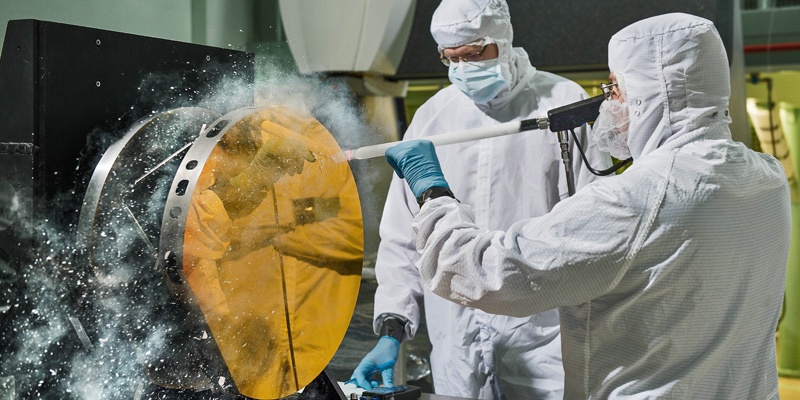When it comes to cleanroom cleaning solutions, ensuring you pick the right products is crucial. You need to know which solutions will meet your cleanroom standards to remain compliant with regulations. For different materials, you’ll need different solutions. For different types of cleanrooms, you’ll need different solutions. For different stages of the cleaning process, you’ll need different solutions. Remember: cleaning and disinfecting are not the same. Both are necessary, and both require different types of cleanroom cleaning solutions.
What is a Cleanroom Cleaner?
The cleaning solution is what is used during the initial cleaning process and does not rely on a solution to achieve the desired results. The cleaning process involves physically removing dirt or other forms of debris or residue from surfaces. Typically, cleaning forms the first step of a detailed regimen and is followed by a thorough disinfecting or sterilization process.
What is a Disinfectant for Cleanrooms?
A disinfectant is a chemical that can destroy disease-carrying microorganisms. Disinfection is defined by the Centers for Disease Control based on whether it occurs on a low, intermediate, or high-level basis. High-level disinfectants destroy all microorganisms apart from bacterial spores, while low and intermediate-level may not be used for killing some bacteria, fungi, or viruses.
What is the difference?
You need to clean your surfaces with detergents before you disinfect them with chemicals. We take a deep dive into the difference between cleaning, disinfectants, and sterilization but here is a high-level overview:
Detergents should be neutral, non-ionic, and non-foaming. Be sure also that your detergent’s cleaning properties won’t inhibit your chemical’s disinfecting properties.
Chemicals should effectively combat multiple types of microorganisms rapidly (meaning you don’t need to spray them on and let them sit to truly get your surface clean; they act quickly). We already mentioned this, but it’s important, so we’ll say it again: be sure nothing the disinfectant could contact could deactivate its disinfectant properties. Also, the disinfectant should be able to tolerate the temperatures of your cleanroom, should not damage any of your materials, and should be safe to use.
Common Cleanroom Cleaning Solutions
The above restrictions and the vast amount of solutions on the market can make it feel like you’re trying to fit a square peg in a round hole when picking cleanroom cleaning solutions. However, there are several common solutions that’ll do trick, and knowing what those are will help you narrow your search.
Note that all the solutions mentioned below refer to the cleanroom-grade versions. They should come with sterility certificates and should be packaged in sterile bags, ready for cleanroom use.
Here are the six most common cleanroom cleaning solutions to get your hunt started:
- Cleanroom-Grade Isopropyl Alcohol
This is a fairly obvious choice. We’ve all been using isopropyl alcohol to disinfect thermometers and the like for most of our lives. You should also consider looking for a version of this solution that comes in an aerosol mist so you can effectively sterilize hard to wipe surfaces like gloves and grates. - Cleanroom-Grade Sporicide
If your cleanroom requires a sterile chemical to kill spores, a cleanroom-grade sterile sporicide is a way to go. However, you can also find non-sterile cleanroom-grade sporicides, so be sure you know what you need and what you’re getting. - Cleanroom-Grade Hydrogen Peroxide Fogging
Hydrogen peroxide is great because it evaporates into water and oxygen, leaving no residue behind. Its toxic levels are also very low, and it’s non-flammable, so it’s a safe option. - Phenolics
Phenol is generally used in a hospital disinfection setting. The antimicrobial properties of these compounds and other phenol derivatives have been increasingly improved over the years. They are absorbed by porous materials. - Cleanroom-Grade Sodium Hypochlorite Bleach
Like alcohol and peroxide, bleach is a household product, but this cleanroom version packs a little extra punch. Again, this powerful cleaner comes in sterile and non-sterile versions, so make sure you know what you’re getting. - Cleanroom-Grade Water
You read that right – there’s such a thing as sterile water! This can be used for general wipe-downs or rinses or to dilute other solutions.
The six solutions listed above have only begun to scratch the surface of the cleanroom cleaning solutions that are available. Then, once you know which solutions you need, you still have several decisions to make. Do you need gallons or spray bottles? Do you want the concentrated or diluted version? Sterile or non-sterile? The list goes on.
Don’t tackle these choices alone. Hire a proven agency trained in Cleanroom Cleaning to help ensure you’re using the right cleanroom cleaning solutions for every situation so your organization stays compliant with regulations and standards.







